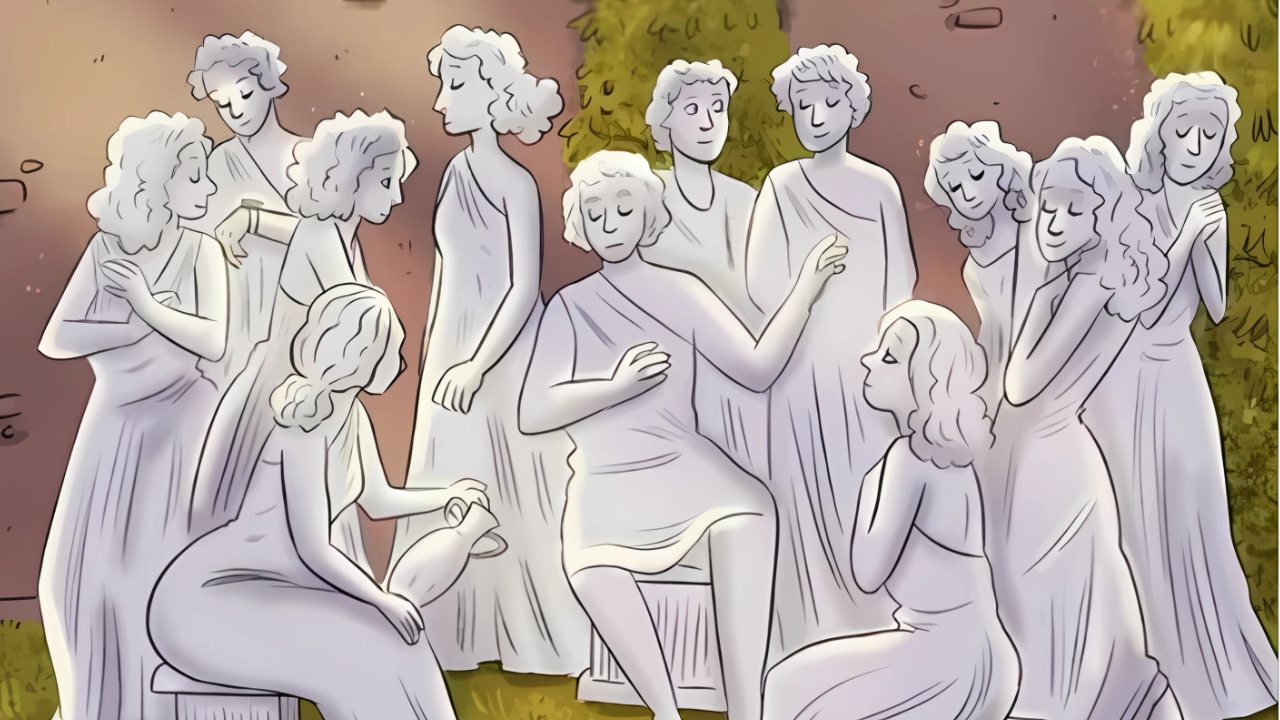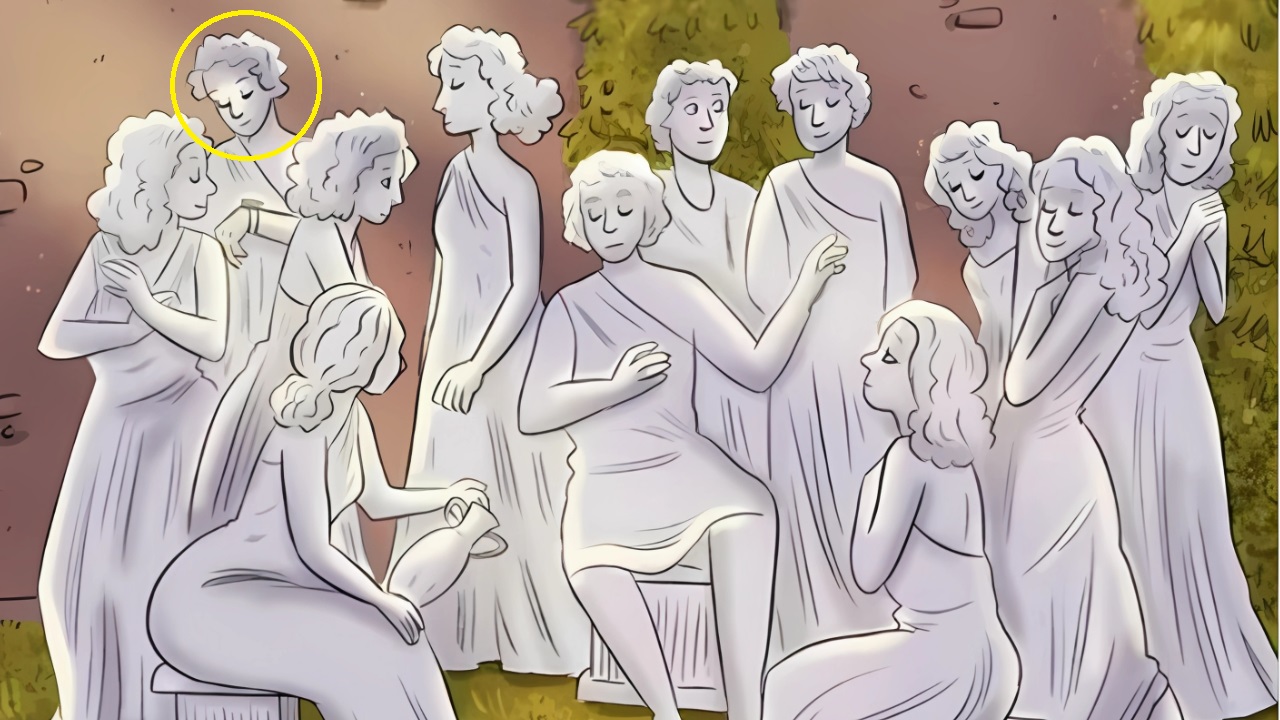Optical Illusion Challenges: The human brain is an extraordinary processing machine, capable of interpreting millions of visual signals every second. Yet sometimes, this same remarkable organ can be delightfully tricked by carefully crafted images that challenge our perception.
Among the most captivating of these visual puzzles are optical illusion challenges that ask viewers to locate hidden figures within complex patterns, often within an impossibly short timeframe like three seconds.
These “find the hidden object” challenges have become increasingly popular across social media platforms and puzzle websites, drawing millions of participants who eagerly test their visual processing abilities against the clock.
The particular challenge of finding a concealed human figure within a busy image represents one of the most engaging forms of visual puzzle, combining elements of pattern recognition, spatial awareness, and rapid cognitive processing.
Understanding the Science Behind Visual Perception
To appreciate why these challenges prove so difficult and fascinating, we must first understand how our visual system processes information. When light enters our eyes, it strikes the retina, where millions of photoreceptor cells convert the light patterns into electrical signals. These signals travel through the optic nerve to the visual cortex in our brain, where an incredibly complex process of interpretation begins.
The brain doesn’t simply record what we see like a camera. Instead, it actively constructs our visual experience by making predictions, filling in gaps, and organizing visual information into meaningful patterns. This process involves multiple areas of the brain working together, each specialized for different aspects of visual processing such as color, motion, depth, and object recognition.
When we encounter an optical illusion or hidden object puzzle, we’re essentially challenging this sophisticated system. The brain must sort through competing visual information, distinguish between foreground and background elements, and identify meaningful shapes within seemingly chaotic patterns. This process becomes particularly challenging when designers deliberately camouflage objects by matching their colors, textures, or patterns to the surrounding environment.
The Psychology of Pattern Recognition

Human beings are naturally excellent at pattern recognition, a skill that proved essential for our evolutionary survival. Our ancestors needed to quickly identify potential threats, locate food sources, and recognize faces of family members and allies. This evolutionary programming means we’re particularly good at spotting human forms, faces, and familiar objects even in challenging visual conditions.
However, this same pattern recognition system can be manipulated through clever design. When a human figure is skillfully integrated into a complex background using similar colors, textures, or orientations, our brain’s automatic processing can initially overlook the hidden element. The figure becomes camouflaged not because it’s invisible, but because it doesn’t immediately trigger our pattern recognition alerts.
The three-second time limit in these challenges adds an additional layer of difficulty. Under time pressure, our brain tends to rely more heavily on quick, automatic processing rather than careful, methodical examination. This means we might miss details that would be obvious given more time to study the image systematically.
Types of Hidden Figure Challenges
Visual puzzles featuring hidden human figures come in several distinct varieties, each presenting unique challenges to our perception system. Understanding these different types can help improve your success rate when tackling such puzzles.
Camouflage integration represents one common approach, where the hidden figure blends seamlessly with the background through matching colors and textures. Think of military camouflage, where soldiers’ uniforms are designed to make them nearly invisible against natural environments. Puzzle designers use similar principles, creating images where human forms are painted or colored to match trees, rocks, buildings, or other environmental elements.
Silhouette challenges present another popular format, where the hidden figure appears as a dark shape against a lighter background or vice versa. These puzzles often hide human profiles or full-body silhouettes within the negative spaces of complex designs, requiring viewers to shift their focus between positive and negative visual elements.
Line art integration creates particularly sophisticated challenges by incorporating human figures into busy line drawings or geometric patterns. The hidden person might be formed by the intersection of seemingly random lines, or their outline might be suggested by the arrangement of other visual elements in the design.
Perspective tricks add yet another dimension to these challenges by using unusual viewpoints or orientations to disguise human forms. A figure might be rotated, scaled, or positioned in an unexpected way that makes it less immediately recognizable to our pattern recognition systems.
Strategies for Success
While these three-second challenges might seem to rely purely on luck or natural visual ability, there are actually several strategies that can improve your success rate. Understanding how to systematically approach these puzzles can transform what appears to be a random guessing game into a more methodical visual search.
The systematic scanning approach involves quickly but thoroughly examining the image in an organized pattern rather than letting your eyes dart around randomly. Many successful puzzle solvers develop a consistent scanning routine, perhaps moving from left to right across the image in horizontal strips, or working from the outside edges toward the center. This methodical approach helps ensure that no area of the image goes unexamined, even within the three-second time limit.
Focus shifting represents another valuable technique. Instead of trying to see everything at once, deliberately alternate your focus between different visual elements. Look for human-shaped silhouettes in the negative spaces between objects, examine areas where different textures or colors meet, and pay attention to any regions that seem slightly different from their surroundings.
Scale consideration is particularly important in these challenges. The hidden figure might be much larger or smaller than you initially expect. Some puzzles hide tiny human forms in what appears to be fine detail, while others conceal life-sized figures that span significant portions of the image. Training yourself to consider multiple size possibilities can reveal hidden elements that might otherwise be overlooked.
Color and contrast awareness can also prove crucial. Even when figures are camouflaged to match their surroundings, there are often subtle differences in shade, brightness, or texture that can give them away. Learning to notice these minute variations, even under time pressure, can significantly improve your success rate.
The Cognitive Benefits of Visual Challenges
Engaging regularly with optical illusions and hidden object puzzles offers several cognitive benefits that extend far beyond mere entertainment. These visual challenges serve as excellent exercise for various mental faculties, potentially contributing to improved cognitive function and mental agility.
Visual attention training represents one of the most direct benefits. These puzzles require focused, sustained attention while simultaneously demanding rapid processing of complex visual information. Regular practice can improve your ability to concentrate on visual tasks and enhance your capacity to notice important details in everyday situations.
Spatial reasoning skills also receive significant exercise through these challenges. Successfully locating hidden figures requires understanding how objects relate to each other in space, how perspective affects appearance, and how individual elements combine to form larger patterns. These spatial skills prove valuable in many real-world contexts, from navigation to problem-solving.
Cognitive flexibility gets a workout as well, as successful puzzle solving often requires shifting between different visual strategies and approaches. When one method doesn’t yield results, effective puzzle solvers quickly adapt their approach, trying different scanning patterns or focusing on different visual elements.
Processing speed naturally improves with practice. While three seconds might seem impossibly short initially, regular engagement with these challenges can train your visual system to process and analyze complex images more rapidly. This enhanced processing speed can prove beneficial in many daily activities that require quick visual assessment.
The Role of Individual Differences
Not everyone performs equally well on these visual challenges, and understanding the factors that contribute to individual differences can help explain why some people seem naturally gifted at spotting hidden figures while others struggle consistently.
Visual processing speed varies significantly among individuals, influenced by both genetic factors and experience. Some people naturally process visual information more quickly, giving them an advantage in time-limited challenges. However, this processing speed can be improved through practice and training.
Attention style represents another important factor. Some individuals naturally employ a broad, diffuse attention style that takes in large amounts of visual information simultaneously, while others tend toward narrow, focused attention that examines details more carefully. Hidden figure challenges often favor the broad attention style, though both approaches can be successful with appropriate strategies.
Experience with similar tasks plays a crucial role in performance. People who regularly engage with visual puzzles, work in fields requiring careful visual observation, or have hobbies involving detailed visual work often perform better on these challenges. This suggests that the relevant skills can indeed be developed through practice and experience.
Cultural background can also influence performance on these tasks. Different cultures emphasize different visual processing styles and attention patterns, which can affect how individuals approach and solve visual puzzles. Understanding these cultural influences helps explain some of the variation we see in puzzle-solving abilities.
Optical Illusion Anwer

The Appeal and Psychology of Challenge
The enduring popularity of “find the hidden figure” challenges reflects several fundamental aspects of human psychology and our relationship with visual information. Understanding why these puzzles prove so compelling can help explain their widespread appeal and continued popularity across different media platforms.
The challenge aspect itself provides significant psychological appeal. Humans are naturally drawn to achievable challenges that test our abilities without being impossibly difficult. These three-second puzzles occupy a sweet spot of difficulty where success feels rewarding but isn’t guaranteed, creating the perfect conditions for engagement and repeated attempts.
Social sharing amplifies the appeal of these challenges. When someone successfully spots a hidden figure, they often feel compelled to share the puzzle with others, creating a viral effect that spreads these challenges rapidly through social networks. The shared experience of attempting the same visual challenge creates opportunities for social bonding and friendly competition.
The “aha moment” when a hidden figure suddenly becomes visible provides a unique form of satisfaction. This sudden shift in perception, where an invisible element suddenly becomes obvious, triggers a pleasurable cognitive response that encourages continued engagement with similar challenges.
Validation seeking also plays a role in the appeal of these puzzles. Successfully completing a challenge that many others find difficult provides a form of cognitive validation, boosting confidence in one’s visual processing abilities and general problem-solving skills.
Future Perspectives
Optical illusion challenges that ask viewers to find hidden figures within seconds represent a fascinating intersection of art, psychology, and cognitive science. These puzzles tap into fundamental aspects of human visual processing while providing entertainment and mental exercise for millions of participants worldwide.
As our understanding of visual perception continues to advance, we can expect these challenges to become even more sophisticated and engaging. Virtual reality and augmented reality technologies may soon provide new platforms for three-dimensional hidden figure challenges that engage our spatial processing abilities in unprecedented ways.
The educational potential of these visual challenges remains largely untapped. As we better understand the cognitive benefits of regular engagement with visual puzzles, we may see increased incorporation of such challenges into educational curricula and cognitive training programs.
Whether you successfully spot the hidden figure in three seconds or require more time for careful examination, these optical illusion challenges offer valuable insights into the remarkable complexity and occasional limitations of human visual perception. They remind us that seeing isn’t always believing, and that our brains are constantly working to construct our visual reality from the raw sensory information our eyes provide.
The next time you encounter one of these challenging puzzles, remember that you’re not just playing a game but engaging with a sophisticated test of human visual processing that reveals fascinating aspects of how our minds work. Whether you succeed immediately or need multiple attempts, you’re participating in an exploration of the remarkable capabilities and curious limitations of human perception.
